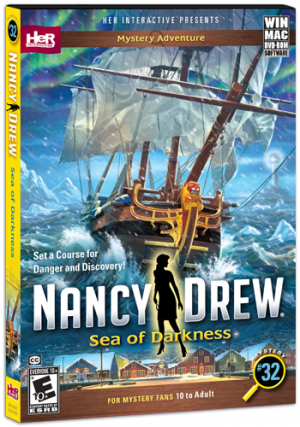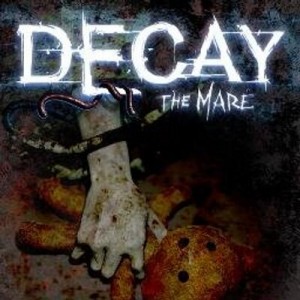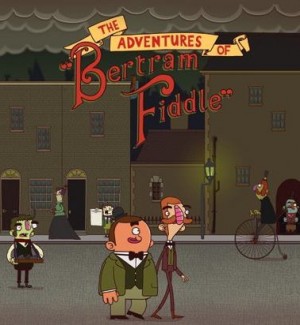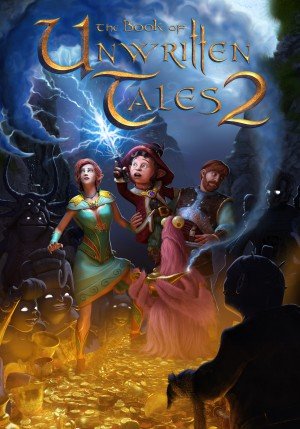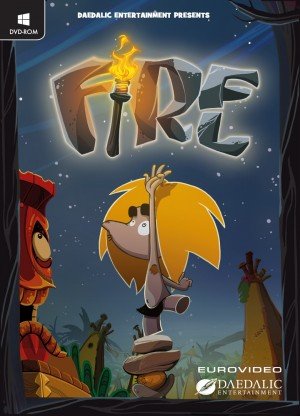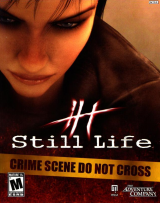Review for Nancy Drew: Sea of Darkness page 2
For her 31st adventure, teen sleuth Nancy Drew treks her way to subpolar Iceland, braving the long dark nights of an isolated fishing village to find a missing person. The villagers Nancy must navigate are just as interesting and full of depth as the terrain she must investigate. But while the tale that unfolds around the search kept me playing, non-integrated puzzles that all seem to follow the same pattern as well as a few frustrating gameplay elements keep Sea of Darkness from rising to the top of Nancy’s many mysteries.
Luckily for series fans, Nancy has no qualms about leaving home at the drop of a hat whenever a friend comes calling for help. This time around, the distress call comes from the sleepy town of Skipbrot, where villagers view outsiders with skepticism, keeping them at arm’s length. Upon her arrival, Nancy meets with a fellow outsider, Dagny Silva. Dagny is a no-nonsense treasure hunter, mercenary in her desire to find what she’s looking for. Not one for niceties, she tells Nancy: “You can call me boss-lady, or my queen, or Dagny, whatevs.” She’s in Skipbrot to participate in the town’s annual ancestor celebration, which includes a showing of a wrecked ship, the Heerlijkheid. But Dagny’s not there out of any civic duty or to learn more about history. She’s there to find treasure. And if she doesn’t want to talk to you, don’t bother her: “I have a space bubble. You’re violating it.”
Dagny had been working to restore the ship with her business partner Magnus Kiljansson. However, just before the festival, he disappeared in the cold wastes. No one knows if he skipped town, potentially with the treasure, or fell afoul of more nefarious deeds.
To begin her investigations, Nancy has to pry information from the town’s few inhabitants, whose voice acting ranges from solid to superb. Elísabet Grimursdóttir manages the showing of the ship as well as the Missti Skip, the town inn and pub. She is a bit paranoid and especially uncomfortable with strangers. Elísabet has an interesting relationship with Magnus, but she is stingy with the information she’s willing to share with Nancy. You’ll also discover that Elísabet’s roots run deep, and her family history is linked very closely with the mysterious treasure tied to the Heerlijkheid.
Elísabet co-runs the ancestor festival along with Soren Bergursson. The town views him as an outsider even though he was born only ten miles away from Skipbrot. His otherness is reinforced by the fact that he spent time in the US for his studies, learning about Viking history and weapons – enough information to make him dangerous and a valuable ally to Dagny in her search for treasure.
And then there’s Gunnar Tonnisson, the town grump. His grey turtleneck sweater blends in quite nicely with his grey beard and hair. Amidst the crackling of a warm fireplace, he’s taken up residence at the town pub and drowns his sorrows while berating you and giving you charming Icelandic nicknames, like fiskur (fish). He’s the local agitator, who vigorously opposes the way the annual ancestor festival is being run. He’s committed regular acts of sabotage (one described in the words of a police chief as “definitely the most offensive use of fermented shark and hot tar I’ve ever seen”), shooting him right to the top of Nancy’s suspect list in Magnus’ disappearance.
As in previous outings, Nancy also interacts with a few characters on the phone (or in this instance via ship radio) rather than in person. Alex Trang mans the Reykjavik harbormaster’s control tower. She regularly communicates with Magnus as the captain of the Heerlijkheid and was privy to some of Magnus’ final communications before he went missing. She’s earning a maritime psychology degree. What’s that you ask? Well, she’s “got a 30-page thesis answering that exact question.” Or to put it more succinctly: “Two words: Sailor feelings.” You’ll interact with Alex on the ship’s radio, and she’ll help Nancy out now and then and give her random ship facts to boot, should you ask for them. And of course, Nancy will be calling her long-suffering boyfriend throughout the game, Ned Nickerson.
Nancy’s sleuthing doesn’t just involve chewing the fat with town locals. She also explores the ship, the town, and its immediate environs. Ambient sounds do a terrific job of fleshing out these locales. When you descend into the bowels of the ship, the heavy creaking of timber and howling wind highlight your isolation. Move out of the ship’s hold and into the sumptuous captain’s cabin, and you’re met with the more soothing sounds of lapping water. The music is also quite lovely, with soft flutes and stringed instruments winding their way through your wanderings. There is also a sad, enchanting original song, “The Word I Couldn’t Keep,” the theme of which echoes in one of the game’s puzzles.
Such a mournful dirge matches the mood of Skipbrot perfectly. It is cold and lonely, desolate and beautiful. Against lowing foghorns, you’ll visit the docks and come across fish sheds, with dried fish heads looking out blankly at a sea dotted with icebergs. The look of the game hasn’t really changed at all from previous outings, although the designers have included some different graphical elements that make for a welcome addition to the usual photorealistic slideshow presentation. For example, as you listen to a salty sea tale about how Gunnar lost a few fingers, you see a charming charcoal animated drawing of the crusty old fart’s battle with a giant squid. Another simply drawn animation tells the history of the town’s relationship with the shipwreck and the mysterious disappearance of the treasure. There are also a few bits of welcome interactivity, such as when you click on a variety of stringed instruments hung up on a pub wall and hear the different plinks, plonks, planks of the strings. Clicking on a small replica of a ship has you turning on cabin lights or firing off cannons.
Although most of the backdrops are static, there is a cold, dark beauty to appreciate, such as the enigmatic and colorful northern lights, gorgeous against the wine dark sea and charcoal sky. You can explore a variety of environments, from scampering up to the ship’s tall crow’s nest to exploring the cramped, eccentric quarters of the town recluse. The town opens up its pub and cultural center filled with tchotchkes to you, and you’ll also get to skip out on a snowmobile to gloomy icy caverns and a remote cabin nestled deep in a snowbank. And the adventure doesn’t stop there; you’ll also get to guide a dinghy out (after fixing its broken motor, of course) to explore an old, still-working lighthouse.
Along the way, you’ll have to solve a variety of puzzles to gather information. You’ll have inventory puzzles to help Nancy discover, break through, or view other objects. And the same minigames from previous outings exist as a completely optional element on Nancy’s smartphone (which also serves as her diary and list of contacts to the outside world). There are only two make-work tasks in the main adventure, which earn you the kronur (Icelandic currency) needed to advance certain elements of the game. One of the money-earning games involved sending out food orders at the pub, lining up orders presented as a set of cards that must be matched on trays in a certain sequence to obtain tips. The game is timed, so the longer you take to make up the order, the smaller your tip. I couldn’t figure the game or pattern out at all, but thankfully it could be skipped entirely. Instead, I was able to earn kronur by playing through a word-match game that has you learning Icelandic terms and linking them to English terms. This game is actually quite easy, and I enjoyed learning Icelandic and marveling at how close English and Icelandic are.
A number of puzzles have learning elements, such as determining the placement of a ship’s sails (I never knew there could be so, so many of them), including a jigger, staysail, spritsail, mainsail, foresail, jib… the list goes on and on. And if learning about sails doesn’t fulfill your sailing knowledge quota, you’ll also encounter a knot-tying puzzle and explore nautical exhibits where you’ll read up about astrolabes and sextants.
There are also plenty of standalone puzzles. This time around, however, some of them aren’t logically integrated into the game. Before she’ll help you, you’ll need to help Dagny keep warm by fixing a heat lamp. Even though Nancy’s no electrician, that’s okay, because for some odd reason this objective has you fitting together objects like Tetris pieces to fix the broken heater, no knowledge of wiring necessary. And the mysteriously taciturn Magnus, though a man of few words, is apparently a man with a penchant for overly elaborate stuffed animal order-matching puzzles. Other, larger puzzles will have you searching for inventory items throughout the entire game that you’ll eventually need to open up objects that may have further codes to solve. There’s also a somewhat irritating ice maze you’ll have to navigate multiple times, made more annoying by the dated slideshow presentation that makes it difficult to tell which direction you have just come from.
Then there’s a selection of pattern and number puzzles as you try to decode messages left behind by various characters; so many, in fact, that they all seemed to blur into the same kind of puzzle to me. My biggest complaint about these puzzles, which can be quite long, is the lack of feedback indicating you’ve made the right choice – it is just maddening. One jigsaw-type puzzle does include such feedback, locking in pieces that have been placed correctly, but this is the exception to the rule.
At the junior sleuth level, you do get layered hints in your list of tasks. However, you can progress through the game in a non-linear fashion, and there isn’t always clear guidance from your journal, hints, or task list about what you need to do next to progress the story. I nearly uninstalled the game in frustration when I encountered a serious block to progression. No characters would talk to me, and none of the game hints pointed me in the right direction. Even walkthroughs didn’t help. It was only after serendipitously completing a seemingly random and optional task did the story pick up again.
The story of a missing treasure and a missing treasure-hunter proved interesting as it played out across nearly eight hours of playtime for me. The writers also added some relationship development between Nancy and Ned, with a bombshell thrown in for good measure. Personally I found the development to be a bit far-fetched, and I’m hoping Ned will make an appearance in future episodes so we can actually see the two interact with each other. In one of the more emotional moments in the game, one of the characters surprises Nancy with a piece of narration about their past. The writing and acting is so superbly done in this scene, I was close to tears at the end of the character’s tale.
Overall, an intriguing mystery, strong acting, and a variety of interesting places to explore overcame the lack of proper puzzle integration for me. Sea of Darkness may not be the best Nancy Drew adventure in the series, but other than some frustrating progress blocks, I was happy to spend time wandering around a desolate, icy world exploring both the town and its people, uncovering and shedding light on the darkness.


